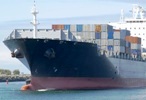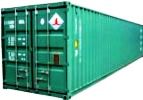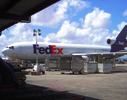| Mubychem Group, established in 1976, is the pioneer manufacturer of Sodium Sulfite or Sodium Sulphite, Pharmaceutical, Fragrance & Flavor chemicals in India. Mubychem Group has several manufacturing facilities spread across Gujarat and Mumbai India and world wide contacts and toll manufacturers. We are exporting globally to countries like USA, Canada, Europe, UAE, South Africa, Tanzania, Kenya, Egypt, Nigeria, Uganda, Turkey, Mexico, Brazil, Chile, Argentina, Dubai etc. |
The participating units have one or more accreditations like FDA - GMP approval; ISO-9001 Certified; "REACH"registered; ISO-22000; Kosher Certified;Halal Certified; HACCP. We offer Pure & IP BP USP FCC Food Grade ACS AR Analytical Reagent Grades of Chemicals | |







Sodium Sulfite Manufacturers, MSDS Sheet
Sodium Sulfite Sulphite Manufacturers USP FCC ACS IP
Sodium Sulfite MSDS Sheet, Material Safety Data Sheet
1. Product Identification
Synonyms: Sodium sulfite anhydrous; disodium sulfite; sulfurous acid, disodium salt; exsiccated sodium sulfite
CAS No.: 7757-83-7
Molecular Weight: 126.04
Chemical Formula: Na2SO3
2. Composition/Information on Ingredients
Ingredient: Sodium Sulfite
CAS No.: 7757-83-7
Percent: 90 - 100%
Hazardous: Yes
3. Hazards Identification
Emergency Overview
WARNING! HARMFUL IF SWALLOWED. MAY CAUSE ALLERGIC REACTION AND BREATHING DIFFICULTIES. MAY CAUSE IRRITATION TO SKIN, EYES, AND RESPIRATORY TRACT.
Potential Health Effects
Although only moderately toxic, in large amounts Sodium sulfite can pose risk to some asthmatics producing central nervous system depression, bronchi constriction and anaphylaxis.
Inhalation: Inhalation of dust may cause irritation to the mucous membranes of the upper respiratory tract. Use of bronchodilators preserved with sulfites can cause allergic reactions.
Ingestion: Sodium sulfite may cause gastric irritation by the liberation of sulfurous acid. Large doses may result in circulatory disturbances, diarrhea, and central nervous system depression. Estimated fatal dose is 0.5 to > 5g/kg.
Skin Contact: May cause irritation.
Eye Contact: May cause irritation, redness and pain.
Aggravation of Pre-existing Conditions: Some individuals are said to be dangerously sensitive to minute amounts of sulfites in foods and some bronchodilator medicines preserved with sulfites. Symptoms may include bronchi constriction, shock, gastrointestinal disturbances, angio edema, flushing, and tingling sensations.
4. First Aid Measures
Eye Contact: Check for and remove any contact lenses. In case of contact, immediately flush eyes with plenty of water for at least 15 minutes. Cold water may be used. Get medical attention.
Skin Contact: In case of contact, immediately flush skin with plenty of water. Cover the irritated skin with an emollient. Remove contaminated clothing and shoes. Cold water may be used. Wash clothing before reuse. Thoroughly clean shoes before reuse. Get medical attention.
Inhalation: If inhaled, remove to fresh air. If not breathing, give artificial respiration. If breathing is difficult, give oxygen. Get medical attention.
Ingestion: Do NOT induce vomiting unless directed to do so by medical personnel. Never give anything by mouth to an unconscious person. If large quantities of this material are swallowed, call a physician immediately. Loosen tight clothing such as a collar, tie, belt or aistband.
5. Fire Fighting Measures
Fire: Sodium sulfite is not considered to be a fire hazard. If involved in a fire, can emit toxic fumes and irritating and corrosive gases.
Explosion: Not considered to be an explosion hazard.
Fire Extinguishing Media: Use any means suitable for extinguishing surrounding fire.
Special Information: In the event of a fire, wear full protective clothing and NIOSH-approved self-contained breathing apparatus with full face piece operated in the pressure demand or other positive pressure mode.
6. Accidental Release Measures
Small Spill: Use appropriate tools to put the spilled solid in a convenient waste disposal container. Finish cleaning by spreading water on the contaminated surface and dispose of according legal requirements.
Large Spill: Use a shovel to put the material into a convenient waste disposal container. Finish cleaning by spreading water on the contaminated surface and allow to evacuate through the sanitary system.
7. Handling and Storage
Keep Sodium sulfite in a tightly closed container. Protect from physical damage. Store in a cool, dry, ventilated area away from sources of heat, moisture and incompatibilities. Containers of Sodium sulfite may be hazardous when empty since they retain product residues (dust, solids); observe all warnings and precautions listed for the product.
8. Exposure Controls/Personal Protection
Airborne Exposure Limits: -ACGIH Threshold Limit Value (TLV) - 5mg/m3 (TWA) for sodium bisulfite & for sodium metabisulfite, A4 Not classifiable as a human carcinogen.
Ventilation System: A system of local and/or general exhaust is recommended to keep employee exposures below the Airborne Exposure Limits. Local exhaust ventilation is generally preferred because it can control the emissions of the contaminant at its source, preventing dispersion of it into the general work area. Please refer to the ACGIH document, Industrial Ventilation, A Manual of Recommended Practices, most recent edition, for details.
Personal Respirators (NIOSH Approved): If the exposure limit is exceeded and engineering controls are not feasible, a half face piece particulate respirator (NIOSH type N95 or better filters) may be worn for up to ten times the exposure limit or the maximum use concentration specified by the appropriate regulatory agency or respirator supplier, whichever is lowest.. A full-face piece particulate respirator (NIOSH type N100 filters) may be worn up to 50 times the exposure limit, or the maximum use concentration specified by the appropriate regulatory agency, or respirator supplier, whichever is lowest. If oil particles (e.g. lubricants, cutting fluids, glycerin, etc.) are present, use a NIOSH type R or P filter. For emergencies or instances where the exposure levels are not known, use a full-face piece positive-pressure, air-supplied respirator. WARNING: Air-purifying respirators do not protect workers in oxygen-deficient atmospheres.
Skin Protection: Wear protective gloves and clean body-covering clothing.
Eye Protection: Use chemical safety goggles. Maintain eye wash fountain and quick-drench facilities in work area.
9. Physical and Chemical Properties
Appearance: Sodium sulfite is white crystals.
Odor: Slightly sulfurous odor.
Solubility: Soluble in ca. 3.2 parts water.
Specific Gravity: 2.6 @ 15.4C (60F)
pH:. 9.5 approx.
% Volatiles by volume @ 21C (70F): 0
Boiling Point: Not applicable.
Melting Point: No information found.
Vapor Density (Air=1): No information found.
Vapor Pressure (mm Hg): No information found.
Evaporation Rate (BuAc=1): No information found.
10. Stability and Reactivity
Stability: Sodium sulfite is stable under ordinary conditions of use and storage. Heat and moisture & air contribute to instability.
Hazardous Decomposition Products: Burning may produce sulfur oxides.
Hazardous Polymerization: Will not occur.
Incompatibilities: Acids, strong oxidizers, high temperatures.
Conditions to Avoid: Heat and moisture.
11. Toxicological Information
Oral mouse LD50: 820 mg/kg. Investigated as a tumorigen and mutagen.
--------\Cancer Lists\ ---------------------------------------- ------------------------------- -NTP Carcinogen--- Ingredient ----------------- Known Anticipated IARC Category ---------------------------- ----- ----------- ------------- Sodium Sulfite (7757-83-7) --- No ----- No ---------- 3
12. Ecological Information
Environmental Fate: No information found.
Environmental Toxicity: No information found.
13. Disposal Considerations
Dispose of Sodium sulfite containers and unused contents in accordance with legal requirements.
14. Transport Information
Not regulated.
15. Regulatory Information
--------\Chemical Inventory Status - Part 1\--------------------- Ingredient ----------------- TSCA ----- EC ---- Japan - Australia ---------------------------- ---- --- ----- --------- Sodium Sulfite (7757-83-7) Yes ------ Yes ---- Yes --- Yes --------\Chemical Inventory Status - Part 2\--------------------- --------------------------------------- --Canada-- Ingredient ----------------- Korea ---- DSL --- NDSL -- Phil. ---------------------------- ----- --- ---- ----- Sodium Sulfite (7757-83-7) Yes ------ Yes --- No ---- Yes --------\Federal, State & International Regulations - Part 1\---- ---------------------------- -SARA 302- ------SARA 313------ Ingredient ----------------- RQ TPQ List Chemical Catg. ---------------------------- --- ----- ---- -------------- Sodium Sulfite (7757-83-7) No -- No --- No ---- No --------\Federal, State & International Regulations - Part 2\---- ------------------------------------ -RCRA- -TSCA- Ingredient ----------------- CERCLA 261.33 8(d) ---------------------------- ------ ------ ------ Sodium Sulfite (7757-83-7) No ---- No ----- No
Chemical Weapons Convention: No; TSCA 12(b): No; CDTA: No
SARA 311/312: Acute: Yes; Chronic: No; Fire: No; Pressure: No
Reactivity: No (Pure / Solid)
Australian Hazchem Code: None allocated.
Poison Schedule: None allocated.
US Federal and State Regulations: TSCA 8(b) inventory: Sodium sulfite
WHMIS (Canada): Not controlled under WHMIS (Canada).
DSCL (EEC):
R22- Harmful if swallowed. R36/37/38- Irritating to eyes, respiratory system and skin. S22- Do not breathe dust. S24/25- Avoid contact with skin and eyes. S26- In case of contact with eyes, rinse immediately with plenty of water and seek medical advice.
S36- Wear suitable protective clothing.
HMIS (U.S.A.):
Health Hazard: 2
Fire Hazard: 0
Reactivity: 0
Personal Protection: E
National Fire Protection Association (U.S.A.):
Health: 1
Flammability: 0
Reactivity: 0
Specific hazard:
Protective Equipment:
Gloves. Lab coat. Dust respirator. Be sure to use an approved/certified respirator or equivalent. Safety glasses.
16. Other Information
Disclaimer:
******************************
Our company provides this Sodium Sulfite Sulphite MSDS information sheet contained herein in good faith but makes no representation as to its comprehensiveness or accuracy. This Sodium Sulfite MSDS sheet is intended only as a guide to the appropriate precautionary handling of the material by a properly trained person using this product. Individuals receiving the information must exercise their independent judgment in determining its appropriateness for a particular purpose.
******************************
Sodium Sulphite manufacturers
Sodium Sulfite manufacturers at:
MUBYCHEM GROUP
CHINCHBUNDER, MUMBAI 400009, INDIA
TEL: (OFFICE) 91-22-23774610, 91-22- 23723564. 91-22-23728264
e-mail: anmol@pcmenergy.com

Copyright and Usual Disclaimer is Applicable.
Global or International Sodium Sulfite or Sodium Sulphite Suppliers, Exporters, Importers, Manufacturers
If I give you “My Word” Nobody can undo it.
If I sign an “Agreement” my Lawyer will undo it
Perfection is made up of small thing but it is not small.

